Among the various advancements in solar technology, bifacial solar panels have been a game-changer. These innovative panels are transforming the industry by maximizing energy production and offering greater efficiency compared to traditional photovoltaic systems.
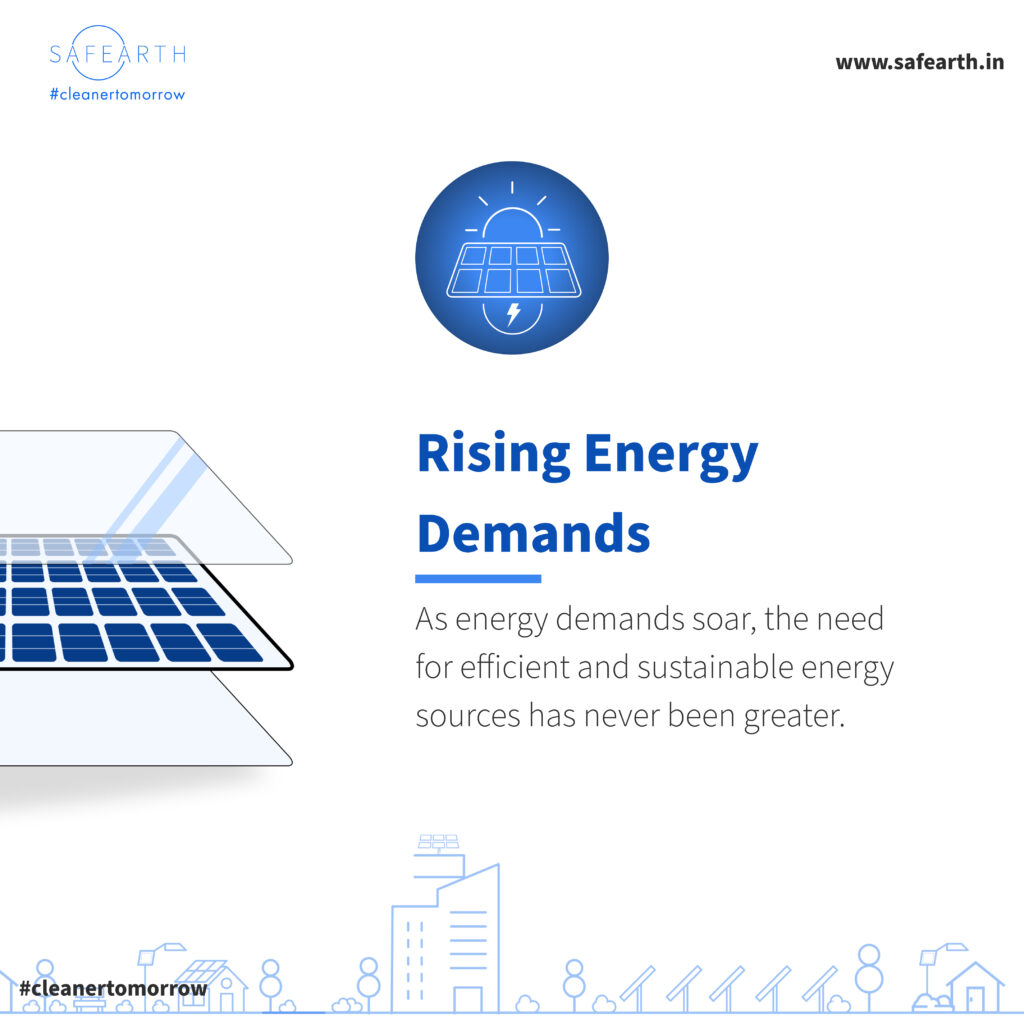
Bifacial solar panels are unique in their design as they can generate electricity from both their front and rear surfaces, capturing sunlight not only from above but also from the reflection of light off surfaces beneath the panel. This dual-sided capability significantly enhances their efficiency, making them an appealing option for solar installations worldwide.
Understanding Bifacial Solar Panels
At their core, bifacial solar panels function similarly to traditional solar panels, converting sunlight into electricity using photovoltaic cells. However, the key differentiator lies in their ability to absorb light from both sides, thus increasing energy output.
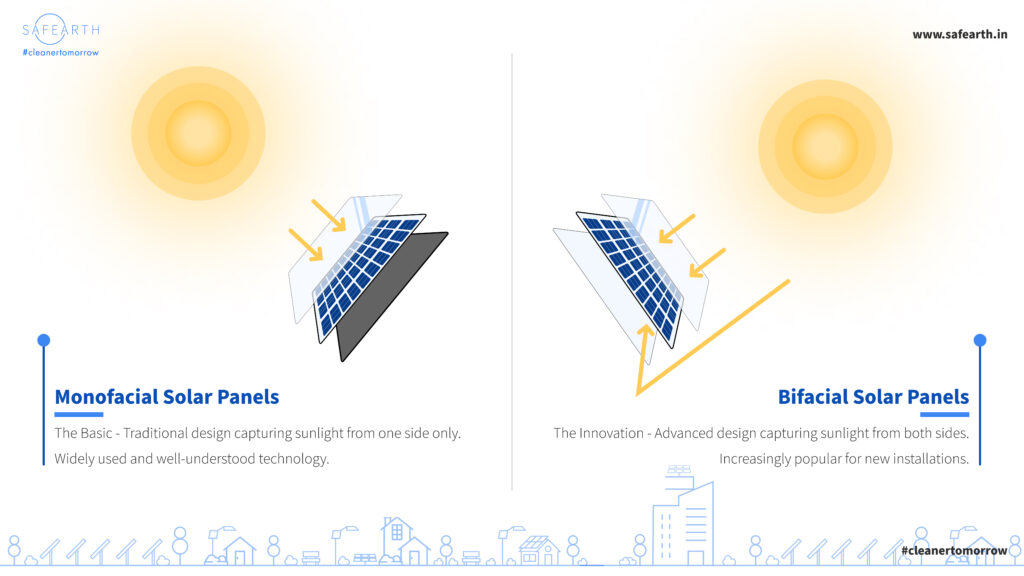
Bifacial solar modules, which feature a transparent front surface allowing sunlight to penetrate to the photovoltaic cells, also have a rear surface designed to capture reflected and diffused light, effectively doubling their exposure to solar irradiance. The electricity generated by these panels primarily depends on the surface reflectivity, or albedo potential, of the installation site and the optimal tilt angle available. Benefiting significantly from the albedo effect—where sunlight is reflected from the ground or surrounding surfaces back onto the rear side of the panels—these modules achieve enhanced efficiency. Ideal surfaces for bifacial installations include highly reflective materials such as white concrete, sand, snow, and water. Such surfaces maximize the albedo effect, enabling bifacial modules to capture more sunlight and generate more power compared to traditional monofacial modules. Consequently, bifacial installations are particularly effective in high-reflectivity locations, driving their increasing popularity in diverse solar energy projects.
Types of Bifacial Solar Panels
Bifacial solar modules offer increased efficiency and flexibility, making them a popular choice for various applications. Here are some variants of bifacial solar modules :
- P – type Bifacial Solar Modules :
These modules use p-type silicon as the semiconductor material. P-type silicon is doped with boron or gallium to create a positively charged layer. P-type bifacial modules are widely used in the industry due to their relatively low production costs and good overall performance. - N-type Bifacial Solar Modules :
In contrast to p-type modules, n-type bifacial modules utilize n-type silicon as the semiconductor material. N-type silicon is doped with phosphorus to create a negatively charged layer. N-type bifacial modules generally exhibit higher efficiency and better temperature tolerance compared to p-type modules. They are often preferred for premium applications where higher performance is desired. - Glass to glass Bifacial Solar Modules :
These modules feature a durable glass layer on both the front and rear sides, hence the name “glass-to-glass”. This construction provides enhanced protection against environmental factors such as moisture, dust and mechanical stress. Glass-to-glass bifacial modules offer improved reliability and longevity, making them suitable for challenging environments and long term installations. - Glass to transparent Sheet Bifacial Solar Modules :
Instead of a traditional glass backsheet, these modules use a transparent sheet on the rear side, allowing sunlight to pass through and reach the rear-facing cells. The design maximizes light absorption and energy conversion, resulting in higher overall efficiency. Glass-to-transparent sheet bifacial modules are particularly well-suited for applications where aesthetics and light transparency are important, such as building-integrated photovoltaics (BIPV).
Advantages of Bifacial Solar Panels
- Enhanced Energy Output :
The primary advantage of bifacial solar panels is their higher energy production. Studies have shown that these panels can generate up to 10-30% more energy compared to traditional monofacial panels, depending on various factors such as installation orientation, location, and surface characteristics. Bifacial modules can also be positioned vertically. This pattern helps even out the daily energy production curve, potentially boosting the overall energy yield of the solar panel system.
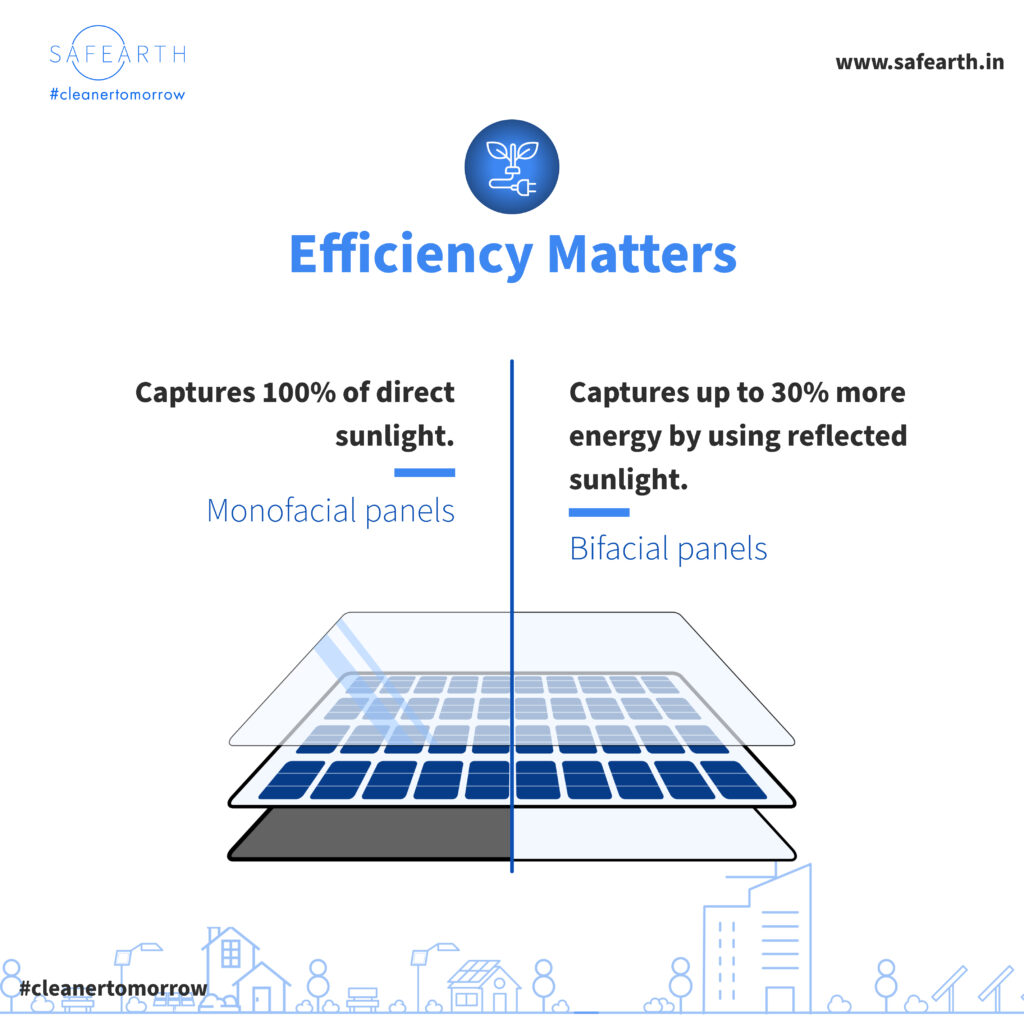
- Versatility in Installation :
Bifacial panels offer versatility in installation, as they can be mounted in various order. Their ability to capture reflected light from different surfaces allows for greater adaptability in different environments. Their ability to generate electricity from both sides allows for greater adaptability in different environments, particularly in locations with reflective surfaces. This versatility makes them suitable for ground-mounted installations, where they can be installed at different tilt angles, as well as for rooftop installations, where they can be integrated into buildings designs to capture reflected light.
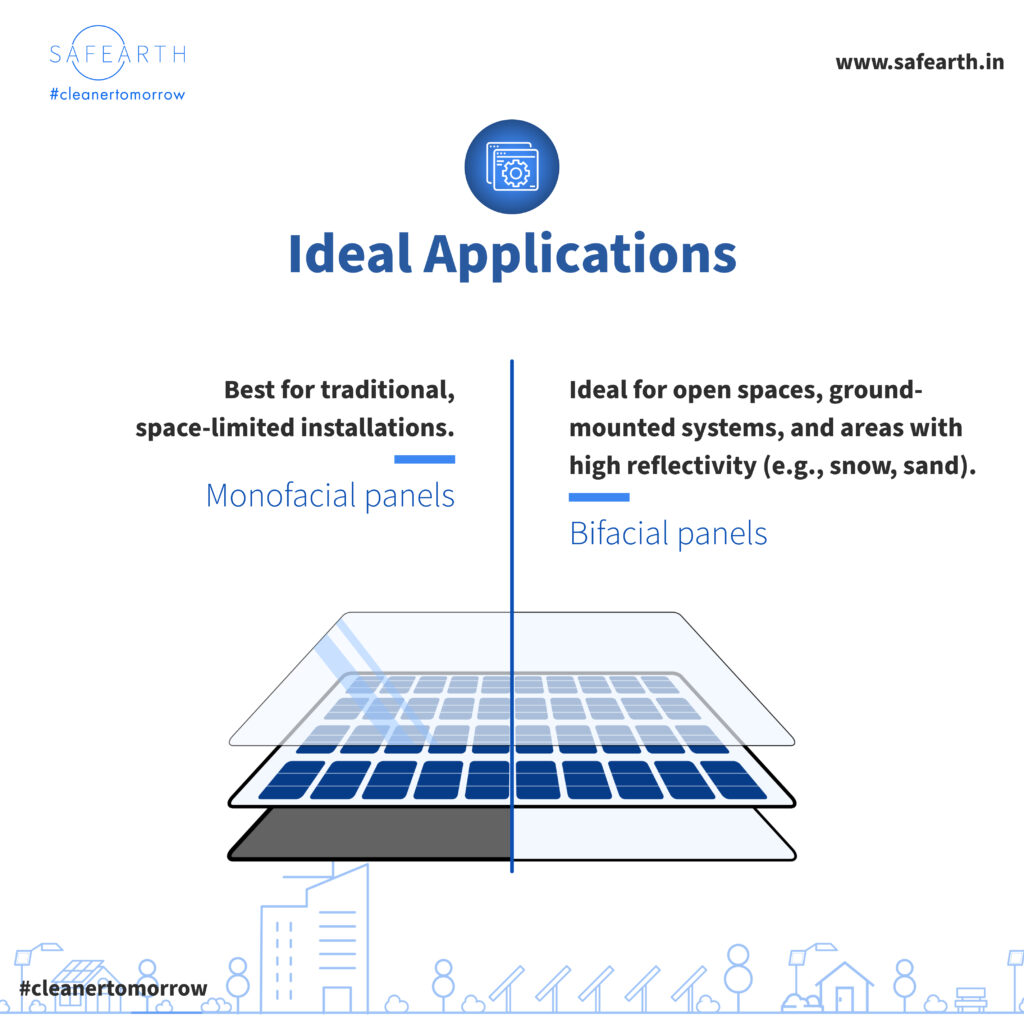
- Increased Durability and Longevity
Many bifacial panels are designed with durable materials that can withstand harsh weather conditions, thereby increasing their lifespan. The dual-sided nature also mitigates issues related to degradation, as they can continue generating power even if one side experiences damage.
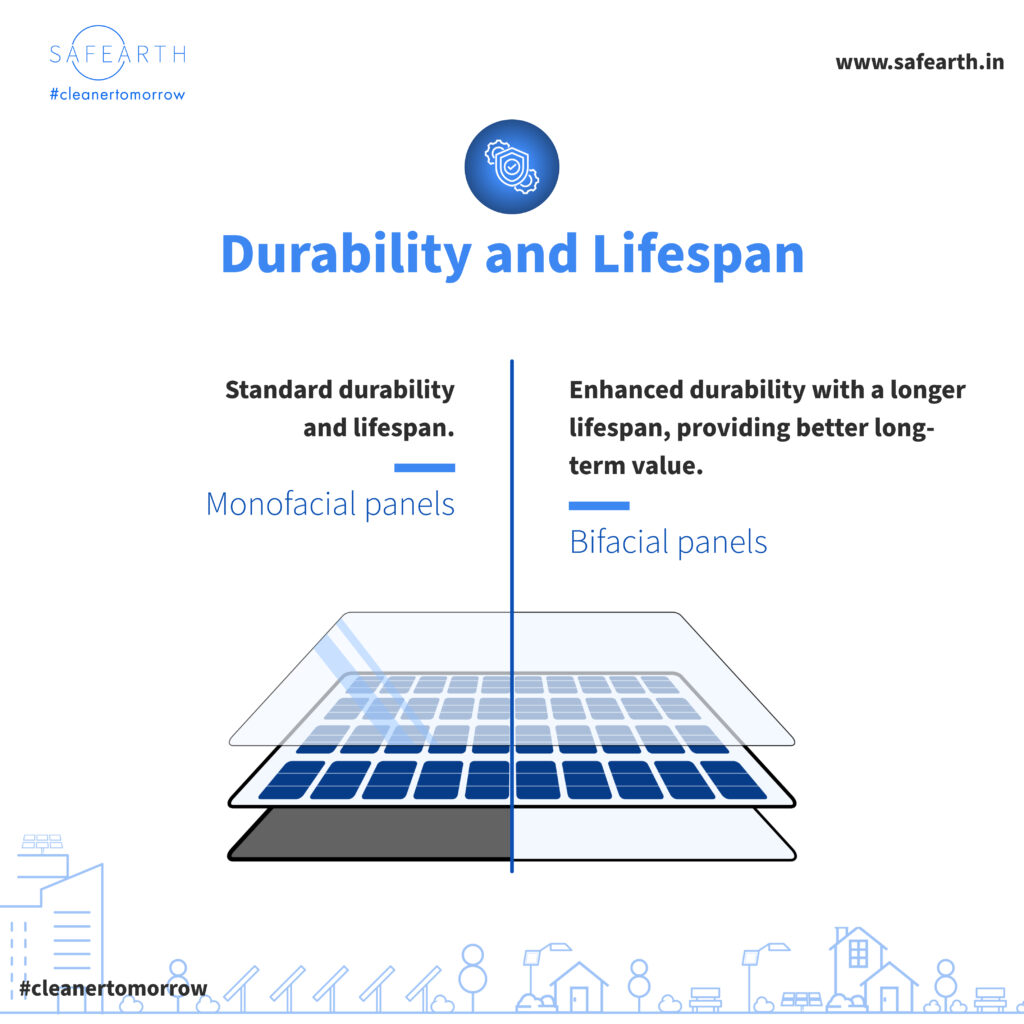
- Potential for Cost Savings
Despite initially being more expensive than traditional solar panels, the increased efficiency and greater energy output of bifacial panels can lead to long-term cost savings. The higher energy production can offset the initial investment, making them a more economically viable option over time.
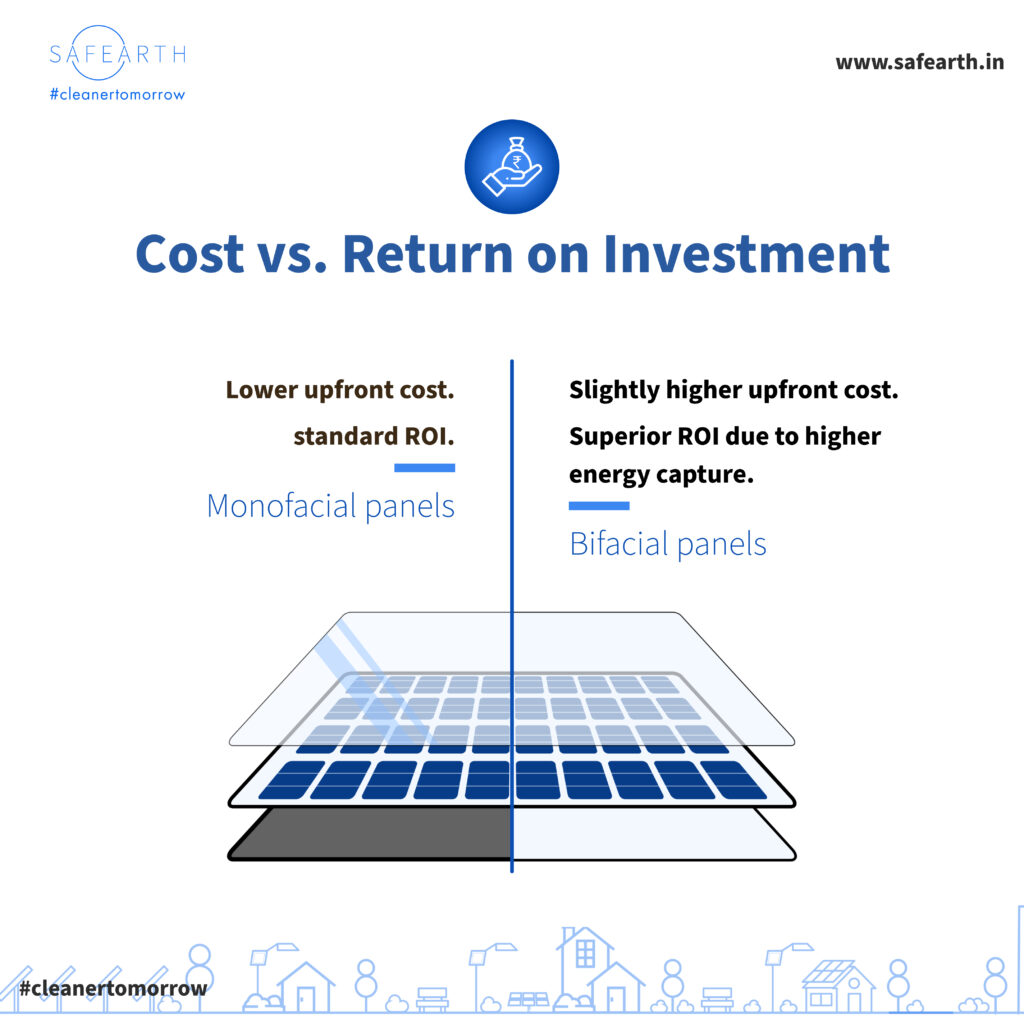
Disadvantages of Bifacial Solar Panels
- Installation Complexity:
Bifacial panels require careful planning and installation to maximize their efficiency. They need to be mounted on reflective surfaces or elevated structures to capture sunlight from both sides effectively. This complexity can increase installation time and labor costs.
- Shading Issues:
Bifacial panels are more sensitive to shading than monofacial panels since they rely on sunlight from both sides. Even partial shading of one side of the panel can significantly reduce overall energy production. This can be a challenge in areas with tall buildings, trees, or other obstructions casting shadows.
- Limited Availability:
Bifacial solar panels are not as widely available as traditional monofacial panels. While their popularity is growing, finding a reliable supplier and ensuring product quality can be more challenging compared to standard solar panels.
Applications and Future Prospects
The applications of bifacial solar panels are diverse, ranging from utility-scale solar farms to commercial and residential installations. Their adaptability and increased efficiency make them a desirable choice for various projects aiming to maximize energy production.
Looking ahead, the future of bifacial solar technology appears promising. Ongoing research and development efforts are focused on optimizing their design, further improving efficiency, and reducing manufacturing costs. As advancements continue, we can expect wider adoption of bifacial panels, contributing significantly to the global shift towards renewable energy sources.
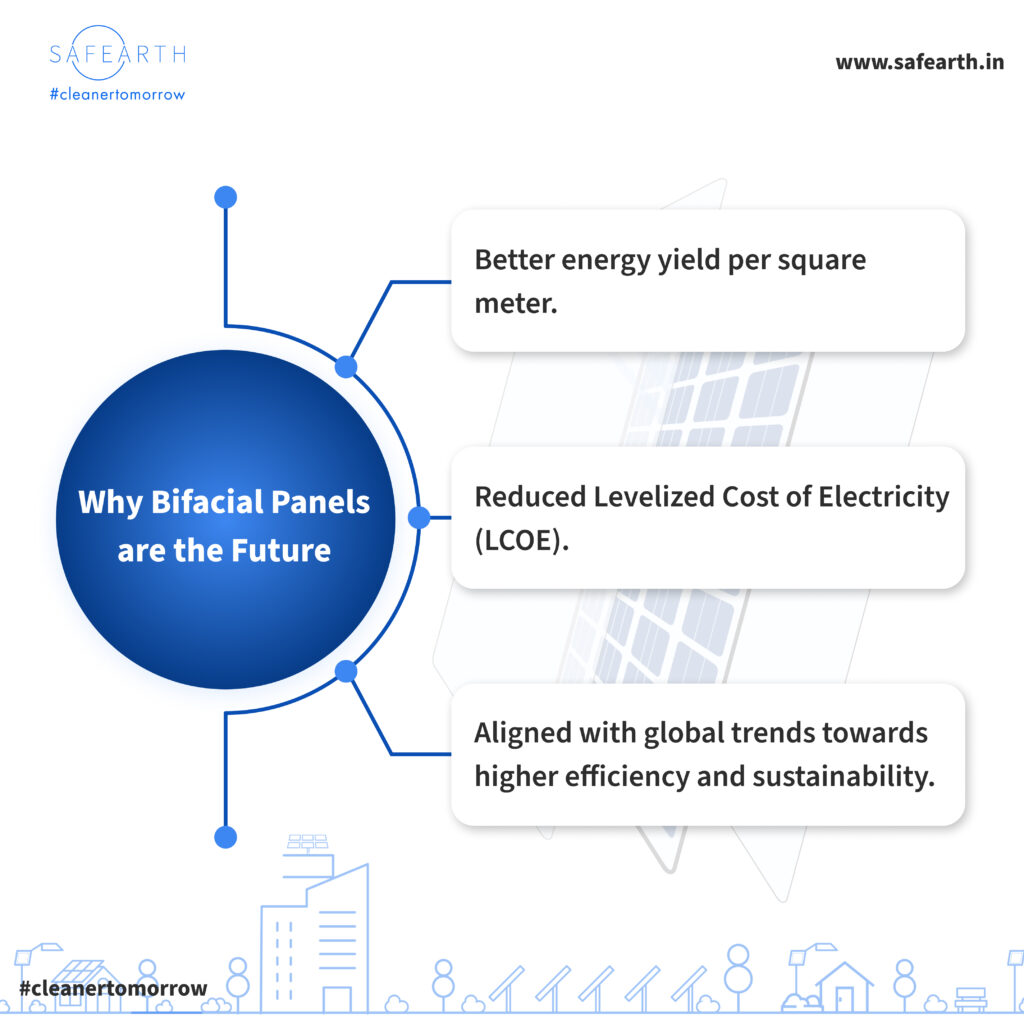
Conclusion
Bifacial solar panels represent a significant leap forward in solar technology, offering increased efficiency, versatility, and sustainability. Their ability to capture sunlight from both sides has driven them to the forefront of the renewable energy landscape, driving innovation and paving the way for a more sustainable future.
As the demand for clean energy grows, the adoption of bifacial solar panels is set to rise, playing a pivotal role in meeting global energy needs while reducing our carbon footprint.
Join our SafEarth marketplace to explore your options and buy your solar system from qualified installers in your area to make the switch easy.

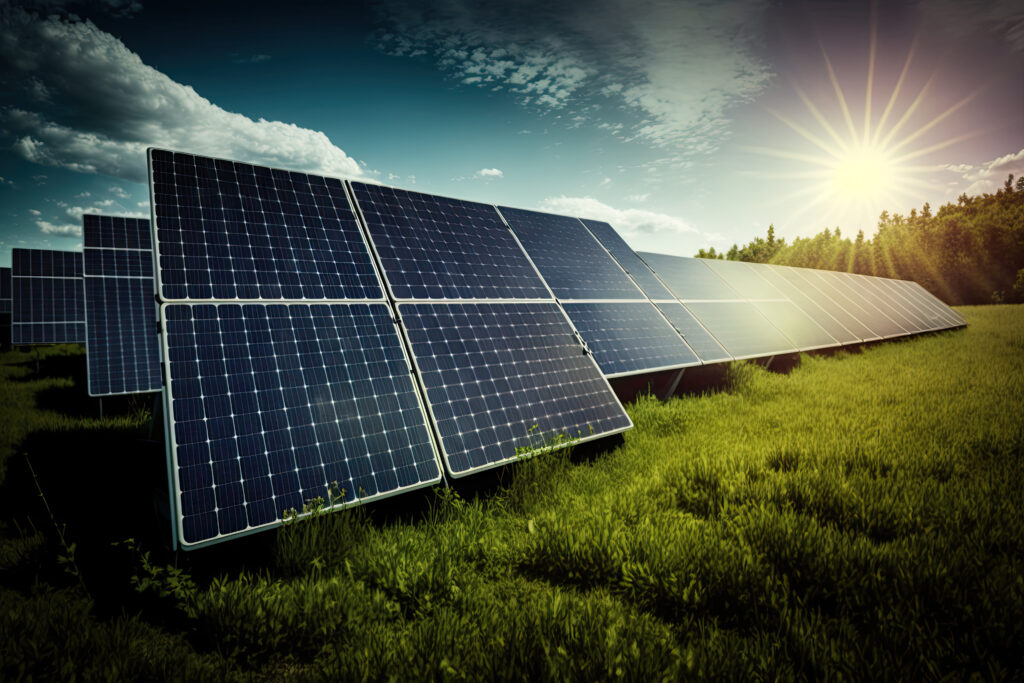
My brother suggested I might like this blog He was totally right This post actually made my day You can not imagine simply how much time I had spent for this info Thanks